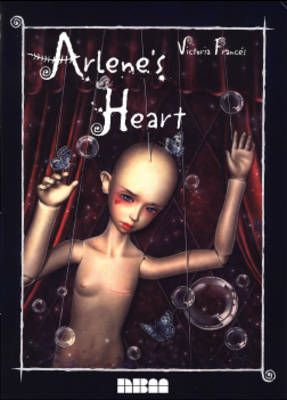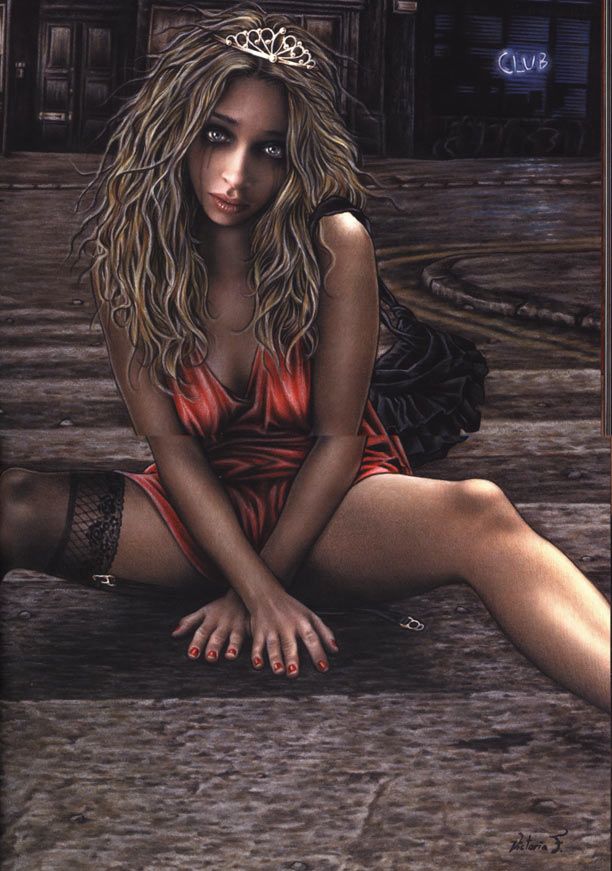A week of NBM reviews continues with today's look at Victoria Francés' graphic novel, Arlene's Heart.
I say graphic novel, but really, it's more like an art book, although I suppose there's enough graphic content (of the other meaning of the term) that, in a way, it is a graphic novel!
The story tells the tale of a homeless girl who develops breast cancer and after a mastectomy, she appears to have a relapse and die, but before death, she experiences a journey as a doll (like the dolls she creates to try to sell to passersby) into a surreal world of oppressed people (mostly female).
It's a really hackneyed story that does, at least, have some impressive artwork.
I say it is more of an art book because the story is extremely slim, and it almost reads like the story (which is told via prose on pages opposite the art) is at times developed AFTER the art was drawn, you know, like she'll draw this really cool drawing of a sad looking woman and say, "After rambling through some of its long corridors, Arlene found on one of the crossroads a young woman with blonde hair who undressed her body and let monstrous shadows kiss her skin. But her face was so real that it looked like she wanted to die right there..."
The image of Arlene as a doll is particularly striking, especially the mastectomy scar.
Francés' work is really quite beautiful, and often absolutely STUNNING, but the whole narrative just feels fairly weak. It is a shame, because the earnestness of Francés here is quite obvious - she clearly feels very strongly about her subjects, the so-called "lost" souls - the homeless, the prostitutes, the junkies, etc. but throughout the book, she really does not give these people any real distinguishing characteristics and their presentation does not really follow organically, as it seems like it is more a case of "And now here's ____ - now, here's _____, now, here's _____." This is why this book really seems to work better as an art book, as then we could at least focus on the book's best trait, Francés' beautiful artwork.
In an odd move, the book contains an epilogue by the writer where she actually then explains what she was going for at certain points in the work. I don't recall ever seeing a book with an epilogue where the writer explains the metaphors s/he was using earlier in the book. I'm sure they exist, though, and I bet they're as odd as this book's epilogue.
In any event, beautiful artwork but not enough story leads me to say that this book is...
Not Recommended.




